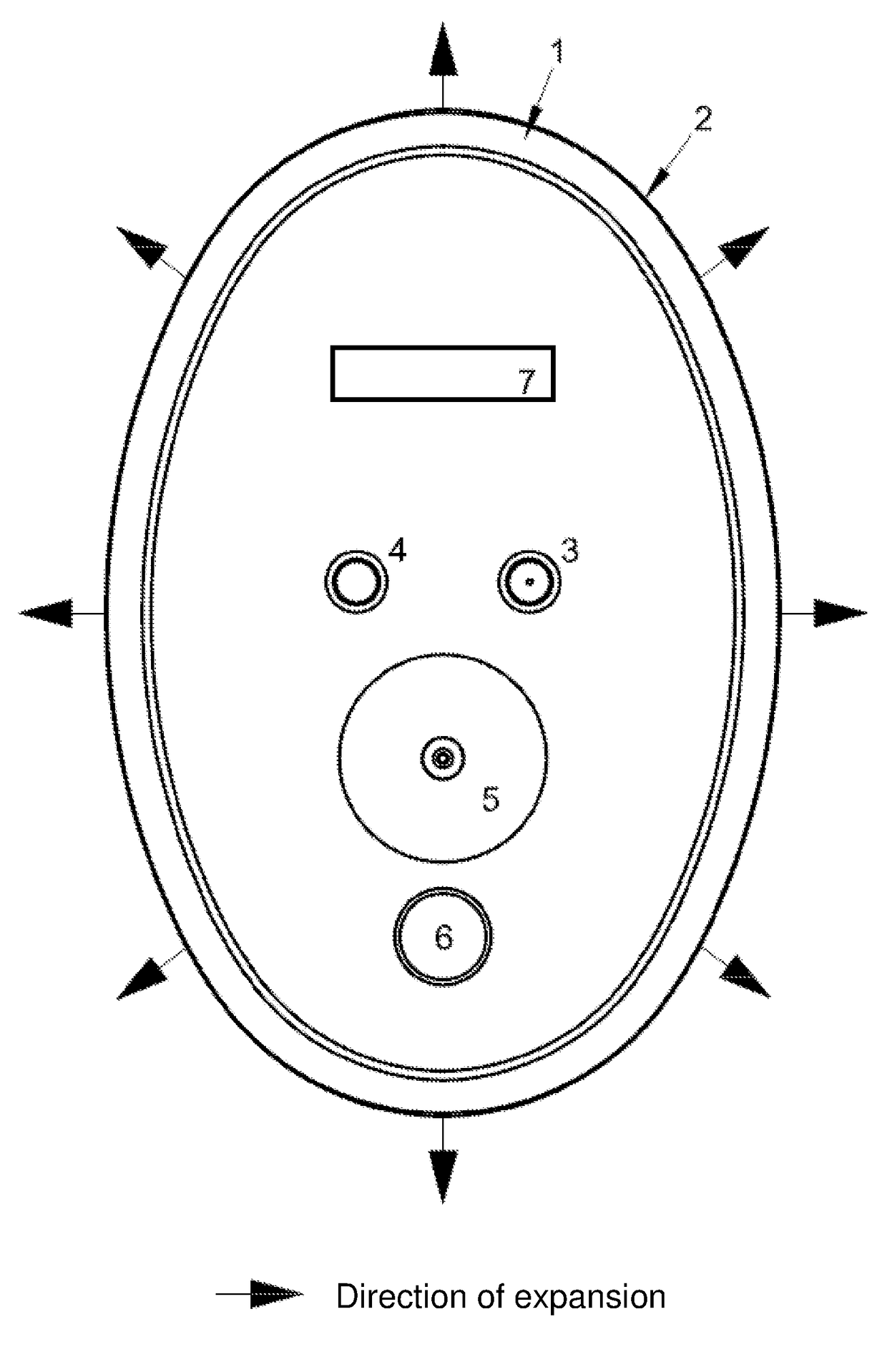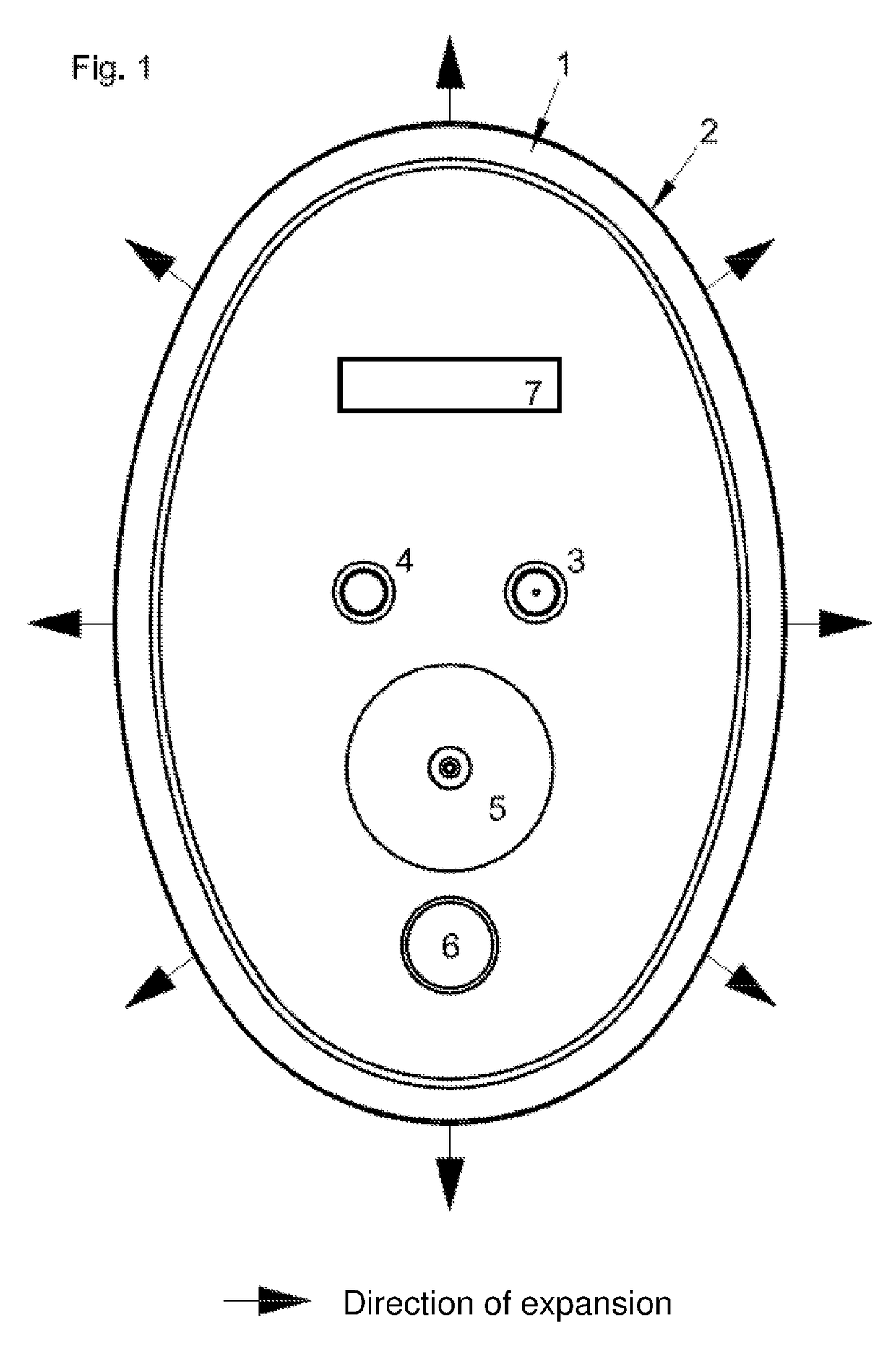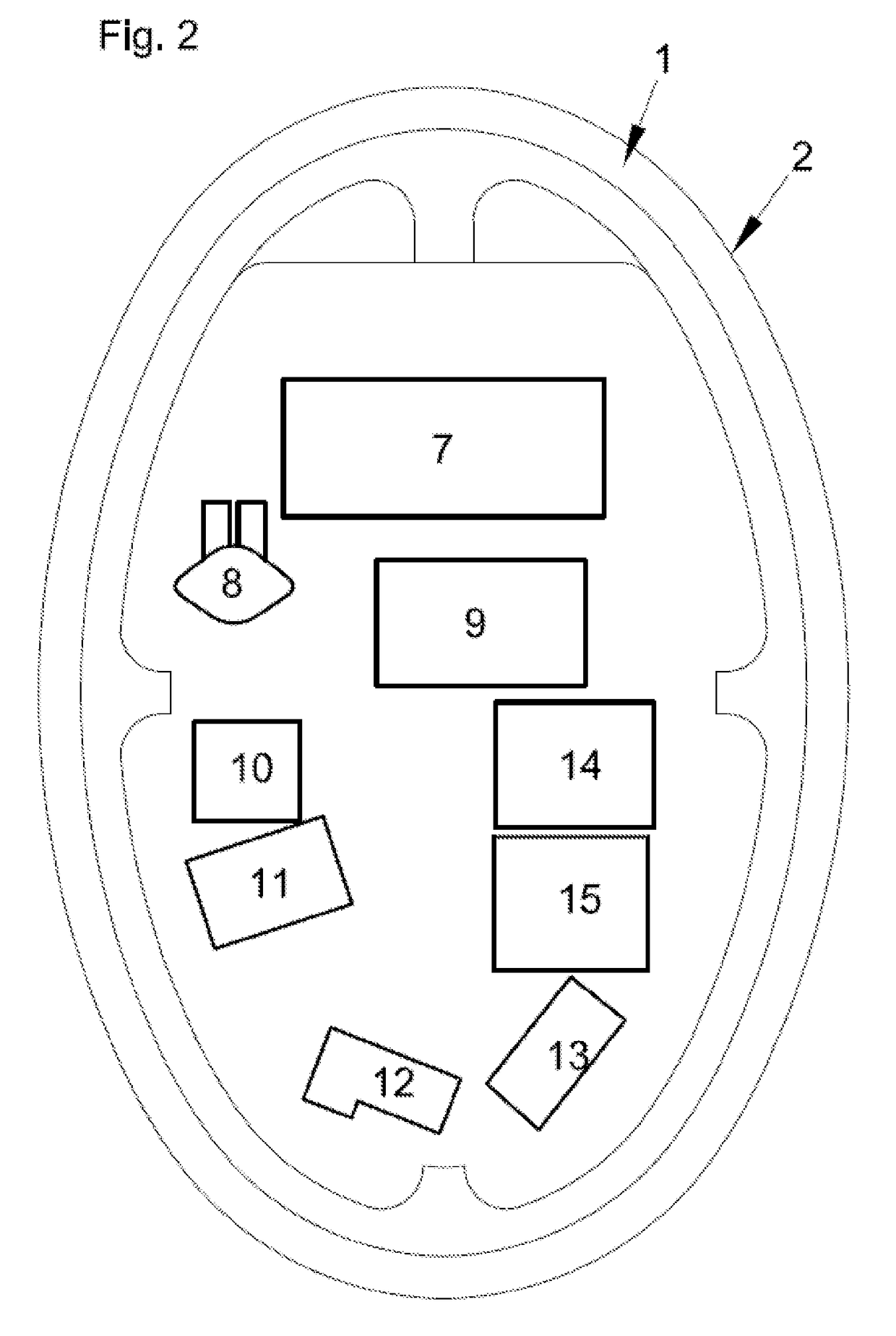Test disc, test system and method for testing the seal of a glove which is installed in a port of an isolator, a glove and an isolator for use with the test system
a test system and glove technology, applied in the direction of fluid tightness measurement, structural/machine measurement, instruments, etc., can solve the problems of frequent and time-consuming training, large known measures, and complex working sequences, so as to increase the efficiency of human/machine interface, reduce the susceptibility to errors, and increase the system safety and reliability
- Summary
- Abstract
- Description
- Claims
- Application Information
AI Technical Summary
Benefits of technology
Problems solved by technology
Method used
Image
Examples
exemplary embodiment 1
[0056]A test of the seal of the gloves installed in the ports of the isolator of a pharmaceutical system is to be carried out. The isolator volume is at atmospheric pressure during the test.
[0057]In good time before the test it is ensured that all the ports have a uniquely defined identification element. RFID elements are selected as the identification element, said elements being let irreversibly into a bore at the edge of the port without compromising the integrity of the isolator volume. As a result of this one-time marking, the ports can be identified unambiguously during all the tests which occur during their period of use.
[0058]In this exemplary embodiment, the gloves can already be equipped by the manufacturer with RFID elements on a standard basis and can therefore also be identified unambiguously.
[0059]Other identification elements (barcodes, engraving, impressed numbers) can also be used, but they give rise to increased expenditure during evaluation.
[0060]A sufficient numb...
exemplary embodiment 2
[0069]A further seal test of the gloves installed in the ports of the isolator of a pharmaceutical system is to be carried out in a way analogous to the task described in the exemplary embodiment 1.
[0070]The equipping of the ports and of the gloves with identification elements as described in exemplary embodiment 1 is ensured.
[0071]In good time before the test it is determined that the ports have a conically tapering shape, with the result that a test disc 1 which forms a seal from the inside to the outside cannot be reliably secured in the port. However, the outwardly protruding attachment connector 18 of the port is suitable for attaching a test disc. The embodiment 1′ of the test disc which forms a seal from the outside to the inside (illustrated in FIGS. 3a and 3b) is therefore selected. The test disc 1′ is equipped with an expansion in the form of a support ring 17, the internal dimensions of which are somewhat larger than the external dimensions of the attachment connector 18,...
PUM
 Login to View More
Login to View More Abstract
Description
Claims
Application Information
 Login to View More
Login to View More - R&D
- Intellectual Property
- Life Sciences
- Materials
- Tech Scout
- Unparalleled Data Quality
- Higher Quality Content
- 60% Fewer Hallucinations
Browse by: Latest US Patents, China's latest patents, Technical Efficacy Thesaurus, Application Domain, Technology Topic, Popular Technical Reports.
© 2025 PatSnap. All rights reserved.Legal|Privacy policy|Modern Slavery Act Transparency Statement|Sitemap|About US| Contact US: help@patsnap.com



